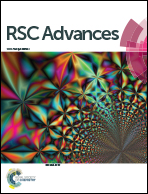Treatment of pharmaceutical wastewater for reuse by coupled membrane-aerated biofilm reactor (MABR) system
Abstract
The high-concentration pharmaceutical intermediate wastewater treatment was studied experimentally by using a coupled membrane-aerated biofilm reactor (MABR) system, which included ozone oxidation as pre-treatment, MABR biochemical method, and improved coagulation–flocculation technology as post-treatment. First, the influence of ozone production rate and reaction time on chemical oxygen demand (COD) reduction and biochemical oxygen demand (BOD5)/COD (B/C) ratio was explored. 53% COD reduction and an increase of B/C ratio from 0.22 to 0.46 were achieved under the conditions of 6 g h−1 of dose and 30 min of reaction time. Subsequently, multi-group continuous experiments were conducted to investigate the effect of hydraulic retention time (HRT), aeration pressure, and flow velocity on C and N removals in MABR system. With 24 h HRT, aeration pressure of 0.15 MPa, and flow velocity of 0.08 m s−1, 95% COD removal and 92% total nitrogen (TN) reduction were obtained simultaneously in the MABR process. Finally, the improved coagulation–flocculation was applied using polyaluminium chloride (PAC, 1.2 g L−1) combined with polyacrylamide (PAM, 2 mg L−1) and magnetic powder (8–10 g L−1) to generate excellent effluent quality for industrial reuse in China (GB/T 19923-2005). In conclusion, O3-MABR-improved coagulation/flocculation technology was feasible for treating pharmaceutical intermediate wastewater for reuse.


 Please wait while we load your content...
Please wait while we load your content...